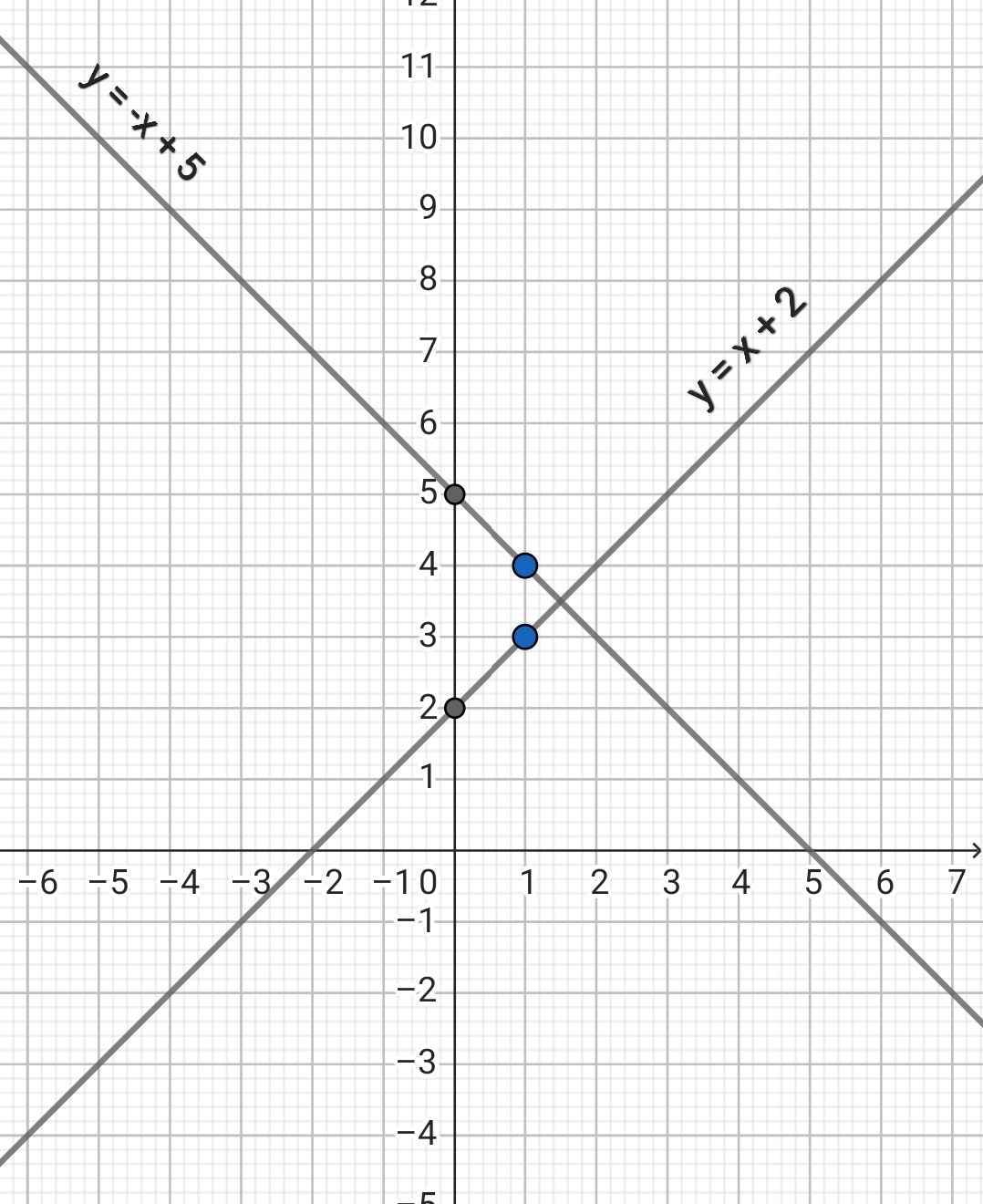Cho tam giác ABC có AB bằng 9 cm ,AC = 12 cm ,BC = 15 cm .Cho điểm M nằm bên cạnh BC sao cho BM = 6 cm .Vẽ đường thẳng MN vuông góc với AC tại N và đường thẳng MP vuông góc với AB tại P
a) Chứng minh rằng tam giác BMP đồng dạng với tam giác MCN b) Tính độ dài AMHãy nhập câu hỏi của bạn vào đây, nếu là tài khoản VIP, bạn sẽ được ưu tiên trả lời.


a) \(4x^2-1=\left(2x+1\right)\left(3x-5\right)\)
\(\Leftrightarrow\left(2x\right)^2-1^2=\left(2x+1\right)\left(3x-5\right)\)
\(\Leftrightarrow\left(2x+1\right)\left(2x-1\right)-\left(2x+1\right)\left(3x-5\right)=0\)
\(\Leftrightarrow\left(2x+1\right)\left(2x-1-3x+5\right)=0\)
\(\Leftrightarrow\left(2x+1\right)\left(4-x\right)=0\)
\(\Leftrightarrow\left[{}\begin{matrix}2x=-1\\4=x\end{matrix}\right.\)
\(\Leftrightarrow\left[{}\begin{matrix}x=-\dfrac{1}{2}\\x=4\end{matrix}\right.\)
Vậy: ...
b) \(\dfrac{x-85}{15}+\dfrac{x-74}{13}+\dfrac{x-67}{11}+\dfrac{x-64}{9}=10\)
\(\Leftrightarrow\dfrac{x-85}{15}+\dfrac{x-74}{13}+\dfrac{x-67}{11}+\dfrac{x-64}{9}-10=0\)
\(\Leftrightarrow\left(\dfrac{x-85}{15}-1\right)+\left(\dfrac{x-74}{13}-2\right)+\left(\dfrac{x-67}{11}-3\right)+\left(\dfrac{x-64}{9}-4\right)=0\)
\(\Leftrightarrow\dfrac{x-100}{15}+\dfrac{x-100}{13}+\dfrac{x-100}{11}+\dfrac{x-100}{9}=0\)
\(\Leftrightarrow\left(x-100\right)\left(\dfrac{1}{15}+\dfrac{1}{13}+\dfrac{1}{11}+\dfrac{1}{9}\right)=0\)
\(\Leftrightarrow x-100=0\)
\(\Leftrightarrow x=100\)
Vậy: ...

a) Bảng giá trị
 Đồ thị:
Đồ thị:

b) Phương trình hoành độ giao điểm của (d₁) và (d₂):
-x + 5 = x + 2
-x - x = 2 - 5
-2x = -3
x = 3/2
Thay x = 3/2 vào (d₂), ta có:
y = 3/2 + 2 = 7/2
Vậy tọa độ giao điểm M(3/2; 7/2)
c) Gọi (d₃): y = ax + b (a ≠ 0) là đồ thị của hàm số cần tìm
Do (d₃) // (d₁) nên a = -1
⇒ (d₃): y = -x + b
Do (d₃) đi qua K(-4; 2) nên thay tọa độ của K(-4; 2) vào (d₃), ta có:
-(-4) + b = 2
b = 2 - 4
b = -2
Vậy hàm số cần tìm là:
y = -x - 2
a) Đồ thị hs:`y=-2x+5` cắt `Ox(5/2;0)` và cắt `Oy(0;5)`
Đồ thị hs: `y=x+2` cắt `Ox(-2;0)` và cắt `Oy(0;2)`

b) Ta có pt hoành độ giao điểm của (d1) và (d2):
\(-2x+5=x+2\)
\(\Leftrightarrow x+2x=5-2\)
\(\Leftrightarrow3x=3\)
\(\Leftrightarrow x=1\)
Thay `x=1` vào `(d_2)` ta có: \(y=1+2=3\)
`=>M(1;3)`
c) Hàm số `y=ax+b` có đồ thị song song với `(d_1):y=-2x+5`
`=>a=-2`
`=>y=-2x+b`
Mà hàm số này đi qua điểm `K(-4;2)` ta thay `x=-4` và `y=2` vào ta có:
`2=-2*(-4)+b`
`<=>2=8+b`
`<=>b=2-8=-6`
Vậy hàm số đó là: `y=-2x-6`

ĐKXĐ: x ≠ 1; x ≠ -1
4/(x - 1) - A = 8/(x² - 1)
⇒ A = 4/(x - 1) - 8/(x² - 1)
= 4(x + 1)/(x² - 1) - 8/(x² - 1)
= (4x + 4 - 8)/(x² - 1)
= (4x - 4)/(x² - 1)
= 4(x - 1)/[(x - 1)(x + 1)]
= 4/(x + 1)

a: Xét ΔAFB và ΔCFI có
\(\widehat{FAB}=\widehat{FCI}\)(hai góc so le trong, AB//CI)
\(\widehat{AFB}=\widehat{CFI}\)(hai góc đối đỉnh)
Do đó: ΔAFB~ΔCFI
b: Xét ΔEAB và ΔEKD có
\(\widehat{EAB}=\widehat{EKD}\)(hai góc so le trong, AB//KD)
\(\widehat{AEB}=\widehat{KED}\)(hai góc đối đỉnh)
Do đó: ΔEAB~ΔEKD
=>\(\dfrac{AB}{KD}=\dfrac{AE}{KE}\)
=>\(AB\cdot KE=AE\cdot KD\)

\(6x^2+4xy-y^2\)
\(=6\left(x^2+\dfrac{2}{3}xy-\dfrac{1}{6}y^2\right)\)
\(=6\left(x^2+2\cdot x\cdot\dfrac{1}{3}y+\dfrac{1}{9}y^2-\dfrac{5}{18}y^2\right)\)
\(=6\left[\left(x+\dfrac{1}{3}y\right)^2-\left(\dfrac{y\sqrt{5}}{3\sqrt{2}}\right)^2\right]\)
\(=6\left(x+\dfrac{1}{3}y-\dfrac{y\sqrt{10}}{6}\right)\left(x+\dfrac{1}{3}y+\dfrac{y\sqrt{10}}{6}\right)\)
b: \(8x^2+3xy-4y^2\)
\(=8\left(x^2+\dfrac{3}{8}xy-\dfrac{1}{2}y^2\right)\)
\(=8\left(x^2+2\cdot x\cdot\dfrac{3}{16}y+\dfrac{9}{256}y^2-\dfrac{137}{256}y^2\right)\)
\(=8\left[\left(x+\dfrac{3}{16}y\right)^2-\left(\dfrac{y\sqrt{137}}{16}\right)^2\right]\)
\(=8\left(x+\dfrac{3}{16}y-\dfrac{y\sqrt{137}}{16}\right)\left(x+\dfrac{3}{16}y+\dfrac{y\sqrt{137}}{16}\right)\)

1.
\(B=\left(ab+bc+ca\right)\left(\dfrac{ab+bc+ca}{abc}\right)-abc\left(\dfrac{a^2b^2+b^2c^2+c^2a^2}{a^2b^2c^2}\right)\)
\(=\dfrac{\left(ab+bc+ca\right)^2}{abc}-\dfrac{a^2b^2+b^2c^2+c^2a^2}{abc}\)
\(=\dfrac{a^2b^2+c^2c^2+c^2a^2+2abc\left(a+b+c\right)}{abc}-\dfrac{a^2b^2+b^2c^2+c^2a^2}{abc}\)
\(=\dfrac{2abc\left(a+b+c\right)}{abc}=2\left(a+b+c\right)\)
2.
\(x+y+z=xyz\Rightarrow\dfrac{x+y+z}{xyz}=1\)
\(\Rightarrow\dfrac{1}{xy}+\dfrac{1}{yz}+\dfrac{1}{zx}=1\)
Lại có:
\(\dfrac{1}{x}+\dfrac{1}{y}+\dfrac{1}{z}=3\Rightarrow\left(\dfrac{1}{x}+\dfrac{1}{y}+\dfrac{1}{z}\right)^2=9\)
\(\Rightarrow\dfrac{1}{x^2}+\dfrac{1}{y^2}+\dfrac{1}{z^2}+\dfrac{2}{xy}+\dfrac{2}{yz}+\dfrac{2}{zx}=9\)
\(\Rightarrow\dfrac{1}{x^2}+\dfrac{1}{y^2}+\dfrac{1}{z^2}+2.1=9\)
\(\Rightarrow\dfrac{1}{x^2}+\dfrac{1}{y^2}+\dfrac{1}{z^2}=7\)

\(pt:25\left(x+1\right)^4-26\left(x+1\right)^2+1=0\\ \Leftrightarrow\left[25\left(x+1\right)^4-25\left(x+1\right)^2\right]-\left[\left(x+1\right)^2-1\right]=0\\ \Leftrightarrow25\left(x+1\right)^2\left[\left(x+1\right)^2-1\right]-\left[\left(x+1\right)^2-1\right]=0\\ \Leftrightarrow\left[\left(x+1\right)^2-1\right]\left[25\left(x+1\right)^2-1\right]=0\\ \Rightarrow\left[{}\begin{matrix}\left(x+1\right)^2-1=0\\25\left(x+1\right)^2-1=0\end{matrix}\right.\\ \Leftrightarrow\left[{}\begin{matrix}\left(x+1\right)^2=1\\\left(x+1\right)^2=\dfrac{1}{25}\end{matrix}\right.\)
\(\Leftrightarrow\left[{}\begin{matrix}x+1=1\\x+1=-1\\x+1=\dfrac{1}{5}\\x+1=-\dfrac{1}{5}\end{matrix}\right.\\ \Leftrightarrow\left[{}\begin{matrix}x=0\\x=-2\\x=-\dfrac{4}{5}\\x=-\dfrac{6}{5}\end{matrix}\right.\)
Vậy tập nghiệm pt: \(S=\left\{0;-2;-\dfrac{4}{5};-\dfrac{6}{5}\right\}\)
\(25\left(x+1\right)^4-26\left(x+1\right)^2+1=0\)
=>\(25\left(x+1\right)^4-25\left(x+1\right)^2-\left(x+1\right)^2+1=0\)
=>\(25\left(x+1\right)^2\left[\left(x+1\right)^2-1\right]-\left[\left(x+1\right)^2-1\right]=0\)
=>\(\left[\left(x+1\right)^2-1\right]\left[25\left(x+1\right)^2-1\right]=0\)
=>\(\left(x+1+1\right)\left(x+1-1\right)\left(5x+5-1\right)\left(5x+5+1\right)=0\)
=>\(x\left(x+2\right)\left(5x+4\right)\left(5x+6\right)=0\)
=>\(\left[{}\begin{matrix}x=0\\x=-2\\x=-\dfrac{4}{5}\\x=-\dfrac{6}{5}\end{matrix}\right.\)



a
ta có: MN\(\perp\)AC
AB\(\perp\)AC
Do đó: MN//AB
ta có: MP\(\perp\)AB
AC\(\perp\)AB
Do đó: MP//AC
Xét ΔBMP vuông tại P và ΔMCN vuông tại N có
\(\widehat{MBP}=\widehat{CMN}\)(hai góc đồng vị, MN//AB)
Do đó: ΔBMP~ΔMCN
b: Xét ΔBAC có MP//AC
nên \(\dfrac{MP}{AC}=\dfrac{BM}{BC}\)
=>\(\dfrac{MP}{12}=\dfrac{6}{15}=\dfrac{2}{5}\)
=>\(MP=12\cdot\dfrac{2}{5}=4,8\left(cm\right)\)
Xét ΔCAB có MN//AB
nên \(\dfrac{MN}{AB}=\dfrac{CM}{CB}\)
=>\(\dfrac{MN}{9}=\dfrac{9}{15}=\dfrac{3}{5}\)
=>MN=9*3/5=5,4(cm)
Xét tứ giác APMN có \(\widehat{APM}=\widehat{ANM}=\widehat{PAN}=90^0\)
nên APMN là hình chữ nhật
=>\(AM^2=MN^2+MP^2=5,4^2+4,8^2=52,2\)
=>\(AM=\sqrt{52,2}\left(cm\right)\)